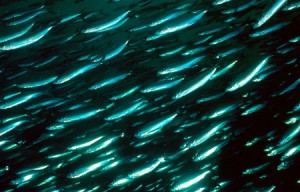November 10, 2015 — The following was released by the Center for Sustainable Fisheries:
COUNTING FISH
A film by Don Cuddy
November, 22 at 1.30 p.m.
New England groundfishermen are in trouble, with catch limits set so low that many boats remain tied to the dock. But the industry has little confidence in the NOAA survey that provides the raw data used for the stock assessment. Accurately counting fish populations in the ocean is a daunting task however and everyone agrees on the need for better science. SMAST researcher Kevin Stokesbury may have found a solution. By using underwater cameras to record fish passing through the open cod end of a net, SMAST survey tows can last for as long as two hours while allowing the fish to escape unharmed.
With very limited resources, Stokesbury and his team have been refining this technology on Georges Bank by conducting spring and fall surveys over the past three years; working in collaboration with the fishing industry which generously donates the boat, the grub and the fuel.
Don Cuddy, program director for the Center for Sustainable fisheries in New Bedford, joined the crew for the May 2015 survey and captured the experience on camera. Those eight days at sea produced more than seven hours of video footage that has now been distilled into a fifty-minute film, called, appropriately enough, ‘Counting Fish.’
For a fascinating look into the world of marine research, join Cuddy, Stokesbury and the crew of the F/V Justice for the premier screening of ‘Counting Fish’ at the New Bedford whaling museum on Sunday, Nov.22 at 1.30 p.m.

